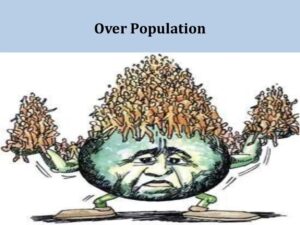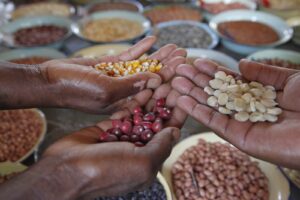Population explosion is the term used to indicate the rapid increase in the population at a specific time period in an area consisting of human beings. Globally, the major causes of population explosion in recent years are: (1) Improvement in the longevity owing to medical facilities, (2) Decline in the mortality rate, (3) Advancements in the agricultural field, (4) Technological developments in the fertility treatment, (5) Increase in the jobs at industries and workplaces to overcome poverty, (6) Increase in the immigration and refugee camps, (7) Lack of education and family planning, and (8) Improvement in the lifestyle and amenities. The effects of population explosion include: (1) Competition for the natural resources, (2) Increase in the pollution of environment, (3) Exhaustion of the energy sources, (4) Impact on the climate changes and global warming, (5) Overexploitation of the under-privileged societies, (6) Rapid loss of biodiversity and ecosystems, (7) Large scale environmental degradation, and (8) Decrease in the food security.

(picture courtesy: population explosion vs food security – Bing images)
The issues pertaining to population explosion and food security was raised by T.R. Malthus for the first time in 1798. Malthus postulated that population tends to increase by a geometric ratio (1, 2, 4, 8, 16, 32, 64) but food production grows by arithmetic ratio (1, 2, 3, 4, 5, 6). Although the idea was over-simplistic, it is not completely irrelevant.
In 1983, The Food and Agriculture Organisation of the United Nations (FAO) defined food security as “ensuring that all people at all times have both physical and economic access to the basic food they need”. In 2023, as the world population reaches a stage of more than 8 billion, to which India contributes 1.4 billion, the question regarding the future availability of food for every individual assumes some importance.
Food security is defined by the World Development Report in 1986. It is a situation when all people can access sufficient nutritious food at all times to lead an active and healthy life. The rapidly accelerating growth in the world-wide population is intensifying the pressure on the food production, storage, and supply chain sector. In turn, this leads to elevated food insecurity and malnutrition in the future generations. Therefore, agriculture and livestock rearing sectors must adapt to accommodate a growing population and a changing climate.

(picture courtesy: food security – Bing images)
The problem of food security is compounded by our increasing tendency to depend on a narrow mix of food crops and hybrid breeds of domestic animals and fishes. Thus, the food production systems have become vulnerable to biotic and abiotic stresses such as diseases, infections, infestations, pest attacks, scanty rainfall, excessive flooding, extreme temperatures, infertile soil, and pollution of environment.
The cultivators in the early periods of civilisation managed such stresses by adopting sustainable agronomic practices like quarantine, true breeding, shifting cultivation, mixed cropping, crop rotations and so on. An instance of the pressure of population making a once-beneficial practice harmful is to be seen in shifting cultivation. As more people require more food and more land, the practice of leaving land fallow long enough to recover is no more practicable, thus rendering shifting cultivation more harmful than useful.
The gravity of the situation of world-wide food security is worsening day-by-day. Studies reveal that most of the countries face major challenges on two fronts vis-a-vis food security, i.e., population explosion which has exceeded agricultural growth rate in the post-independence period and the unequal distribution of food resources due to the abysmally low purchasing power of most of the country’s population.
It is high time we realise the necessity to regulate the population growth and prevent overpopulation. Some of the important solutions that must be considered by economically developing countries to reduce the population are: (1) Empowerment of women, (2) Educating people about importance of family planning, (3) Promoting the use and availability of contraceptives, (4) Government legislation and incentives to encourage small families, (5) Restrict child and early marriages, (6) Introduction of obligatory education to every child. Some of the steps that can improve the status of food availability in developing nations are: (1) Educating people to reduce the food waste, (2) Addressing the problems of overpopulation and unemployment, (3) Enhancement of agricultural and animal husbandry infrastructure, (4) Prevention of environmental pollution, (5) Adaption of food production practices to climate and environmental changes, and (6) Promoting efficient food production techniques.
